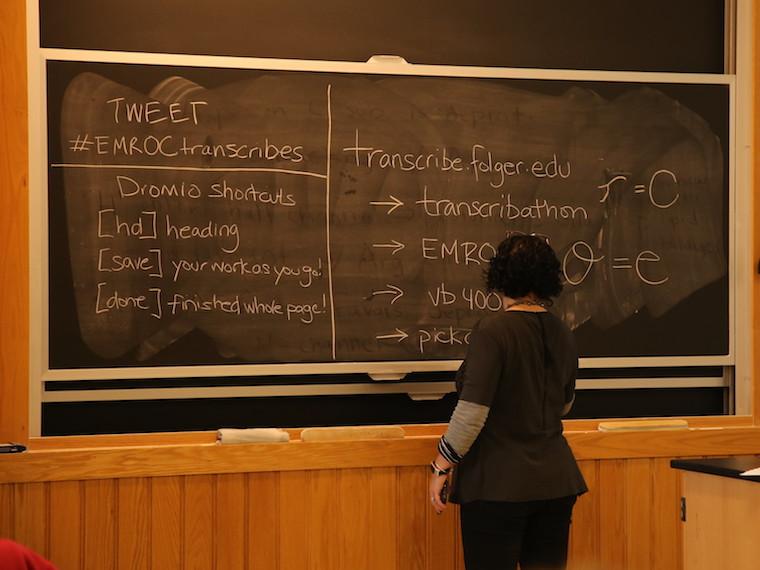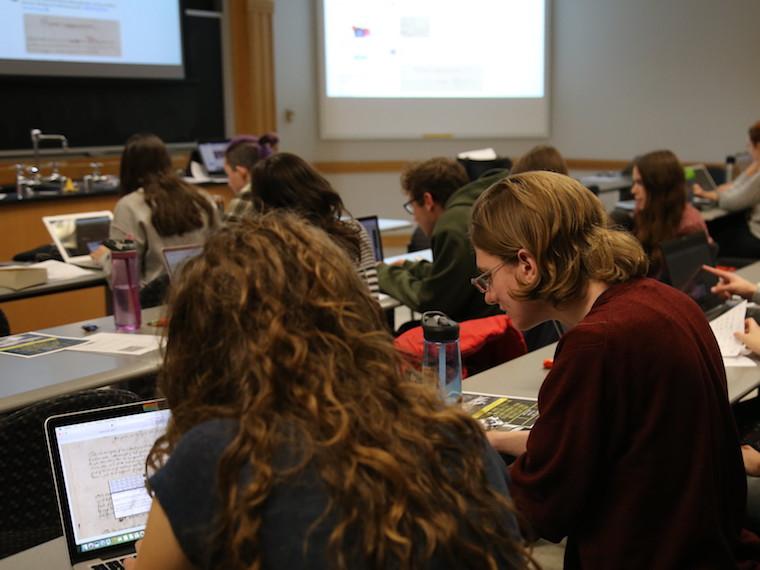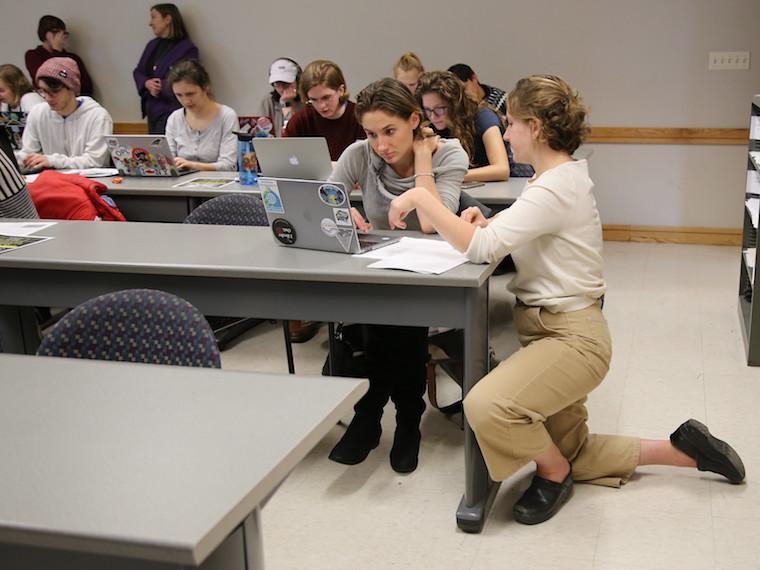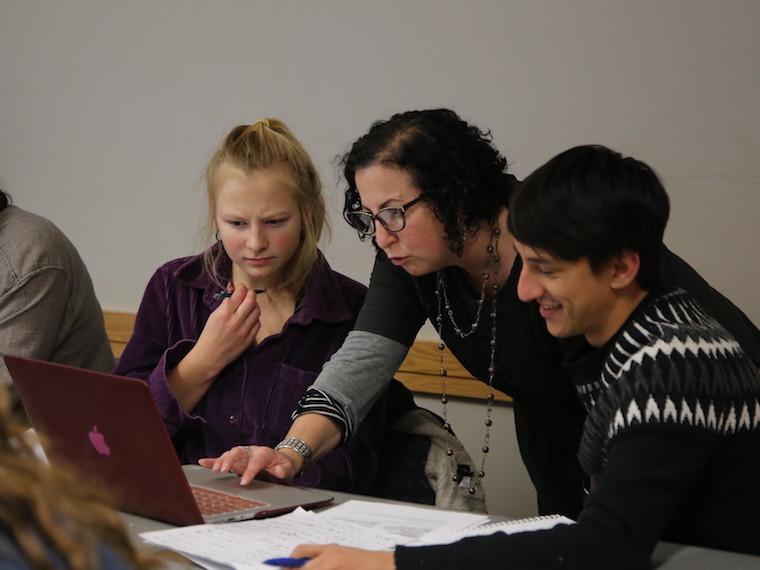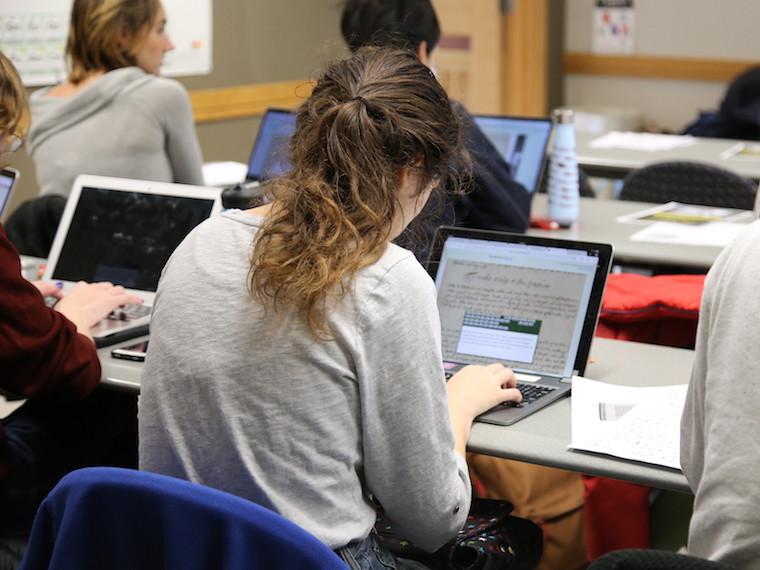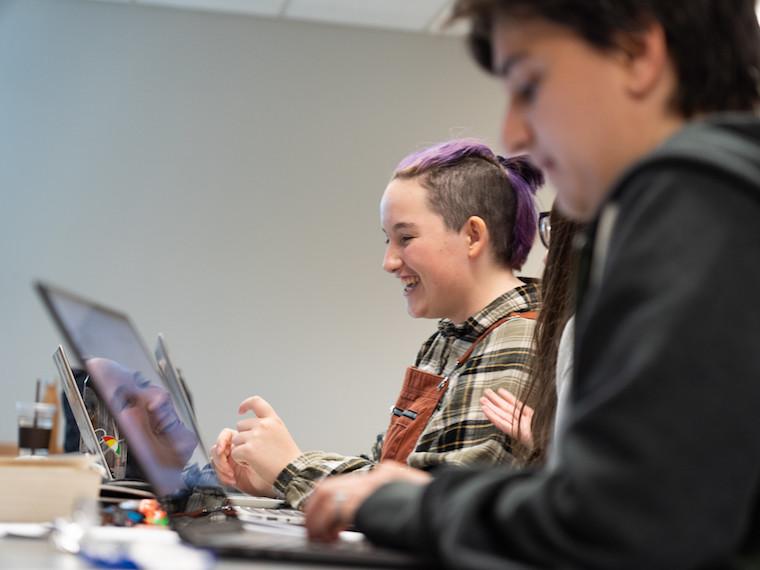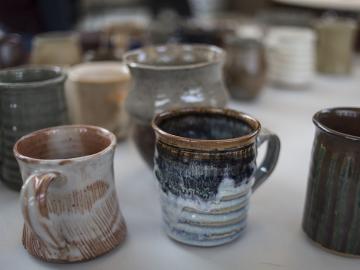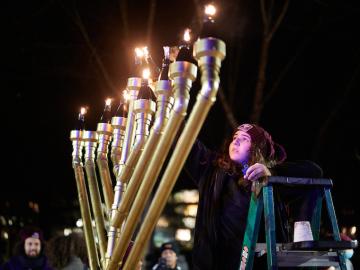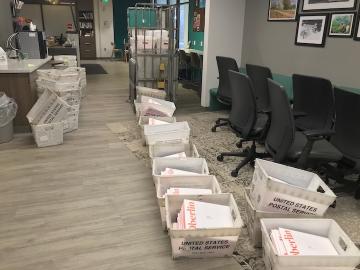Campus News
Unraveling Medicinal Recipes from the 17th Century
November 18, 2019
Yvonne Gay
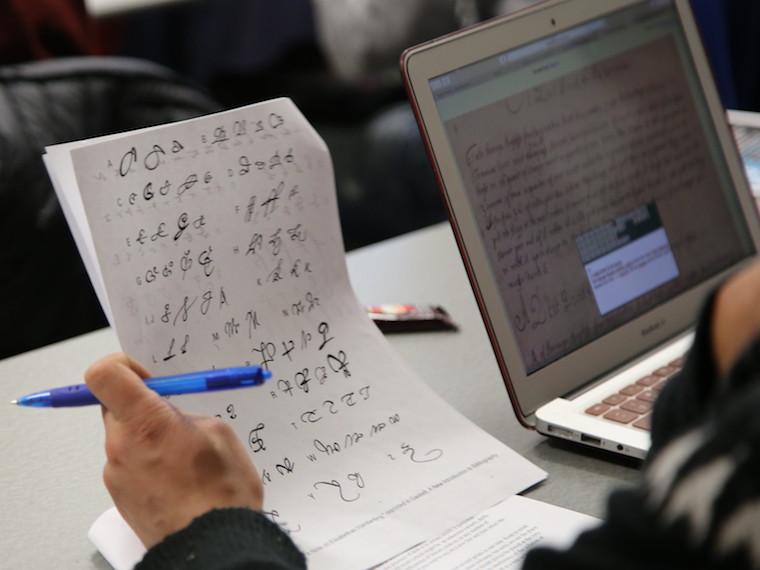
Student volunteers work to produce searchable transcriptions of two 17th-century recipe books in a single day.
A classroom in the Science Center was the perfect location for an English department project. For several hours throughout the day, more than 50 student volunteers filed in and out of room A255 to transcribe medicinal recipes from the 17th century that played a central role in scientific evolution.
The English department’s transcription project was part of the 5th Annual Early Modern Recipe Collection Transcribathon . The goal of this international event is to welcome scholars, students, and the general public in the preservation, transcription, and analysis of recipes written in English from 1550 to 1800, and to make searchable, encoded versions of these texts freely available for scholars and the general public. Volunteers received on-the-spot training of the Folger Shakespeare Library’s online transcription platform and support from English faculty members. They also received insight into the background of these recipes.
“We wanted students to understand the pivotal role women played in the development of scientific and medical discourses, and that a lot of these developments took place in the home and kitchen,” says Danielle Skeehan, assistant professor of English and comparative American studies. “Once transcribed, these recipes become accessible and searchable for a wider audience who wants to learn more about early modern women, domesticity, science, and medicine.”
There would be even more learning outcomes, days after the Transcribathon. Wendy Hyman associate professor of English and comparative literature, explains. “I found something related to the Transcribathon that thought it would be interesting to share,” she writes.
“I was working with a student on a manuscript (call #V.a.621, written by Catherine Bacon) on the Folger Library website the other day. We chose it pretty much at random. And we came across a recipe which utilizes ‘they’ as a singular third person pronoun, just as contemporary trans activists are urging us to do. … It is for a compound to relieve birth pangs (or travails):”
‘‘To help a woman if her travell [travail] be hard and if they have been long without children & or of the first child to open the wombe.’’
“In other words, the woman giving birth is, later in the sentence, referred to as ‘they.’ This is not an anomaly; ‘they’ had occasionally been used just like ] ‘she’ and ‘he’ since the middle ages. But I think it’s pretty neat to see it there in seventeenth century handwriting.’’

Photo Gallery
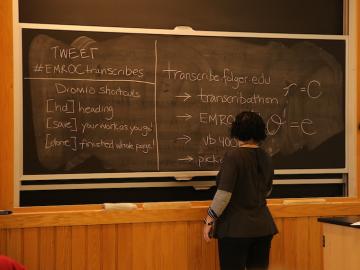
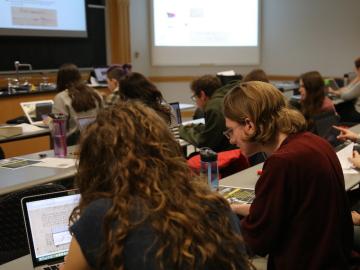
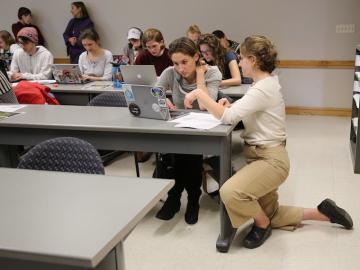
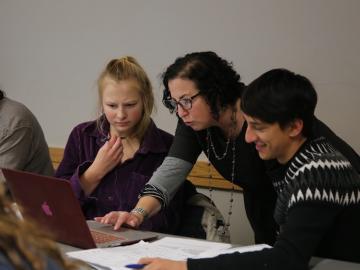
Tags:
You may also like…
This Week in Photos: The Mug That Keeps Giving
December 23, 2021
Dozens of handcrafted mugs of varying shapes, shades, and textures rest on tables throughout a large meeting space at First Church in Oberlin. These small, handheld items make for terrific gifts, and are traditionally sold in December. They also serve as inspiration for this week’s photo series.
This Week in Photos: Dancing, Swimming, Singing, Celebrating
December 14, 2021
A student takes a few steps on a ladder and stretches one arm to the top of a large glowing menorah in the center of Tappan Square. The gold branched candelabra and flames glisten against the night sky, and those surrounding it look up at its brilliance. This Oberlin community gathering, in celebration of the last night of Hanukkah, leads off this week’s photo series.
This Week in Photos: The Big Send-Off
March 26, 2021
United States Postal Service bins line the floor and are stacked on mobile shelves in the Office of Admissions. This annual display serves as inspiration for this week’s photo series.
